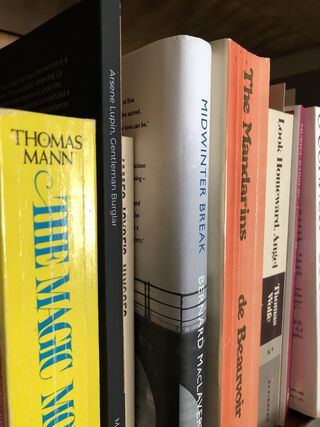Motivation
What Is Your Reading Plan for 2022? Mine Surprised Me
Most people want to read more. I want to read less. Here's why.
Posted December 29, 2021 Reviewed by Pam Dailey
Key points
- Instead of going for speed or quantity when reading, why not slow down?
- By taking a "less is more" attitude, I hope to gain more from reading.
- Closer, deeper reading becomes a treat in itself.
One of my goals for 2022 is to….read less.
I know, I know, most people want to read more, and I’ve always been one of them, following the “So many books, so little time” motto. But my new maxim is “Less can be more.” And I think I'll be happier because of it.

I was shocked into this attitude by a recent article called something like “How I read 52 books in a month.” The tips included reading only the first and last sentences in a paragraph or just reading summaries (forget the whole book). Then I saw a tweet from someone who’d read 99 books in 2021 and wanted suggestions on what to read for his 100th. I’ve never counted the books I read during a given year but assume it’s close to that (certainly not 52 a month). I read several books at once and admit to being a skimmer and scanner more than a word-by-word reader. I read for knowledge, content, and story, which means I can review or scarf down two or three books a week. Most are nonfiction, but recently I’ve leaned toward fiction. And sadly, I increasingly find that once read means nearly forgotten. Maybe it's age, but I suspect it's more because of my reading style.
So, in 2022, I’ll go for fewer books, but deeper reading. Francine Prose, in her book How to Read Like a Writer, argues for slow reading, word-by-word, sentence-by-sentence, paragraph-by-paragraph. Sounds obvious, but in my “get to the point” thinking, I’ve not followed her approach.
Prose shows why deep reading is crucial and how readers can interact with what they read by making notes, asking questions, and rereading if need be. Part of this means intentional slowing down…to hear and feel the words. Throughout her book, Prose illustrates what she means by analyzing portions of great books. Where I normally could race through a page of a Flannery O’Connor short story in a under a minute, Prose scrutinizes a single paragraph—and takes several pages of her book to do it.

Of course, I used to be a slow reader, marking passages, “talking to the writer” in the margins. When I pull old books from my shelves, I find ones that are filled with underlining, comments, and notes in the covers. I followed the Prose approach in college and in my early career days, before I got hooked on keeping up to date with the news every five minutes. So, it’s time to return to my old habits or renew ones I had, thanks to Ms. Prose.
I’ve started during the week before New Year’s. The old habits/new habits fall into place, faster than I expected. I see how well a good author captures the essence of characters in a short phrase or sentence. I’m loving the references to history in one book (so I stop and look them up), and I think I’ve caught a joke or two that the author is making where I’d have missed them at my normal rapid-fire pace. At this rate, I may need a year to work through the book I’ve started. Then again, “less can be more,” so I just don’t worry.
Happy Reading.
References
Prose, F. (2007). Reading Like a Writer. New York: Harper Perennial.


